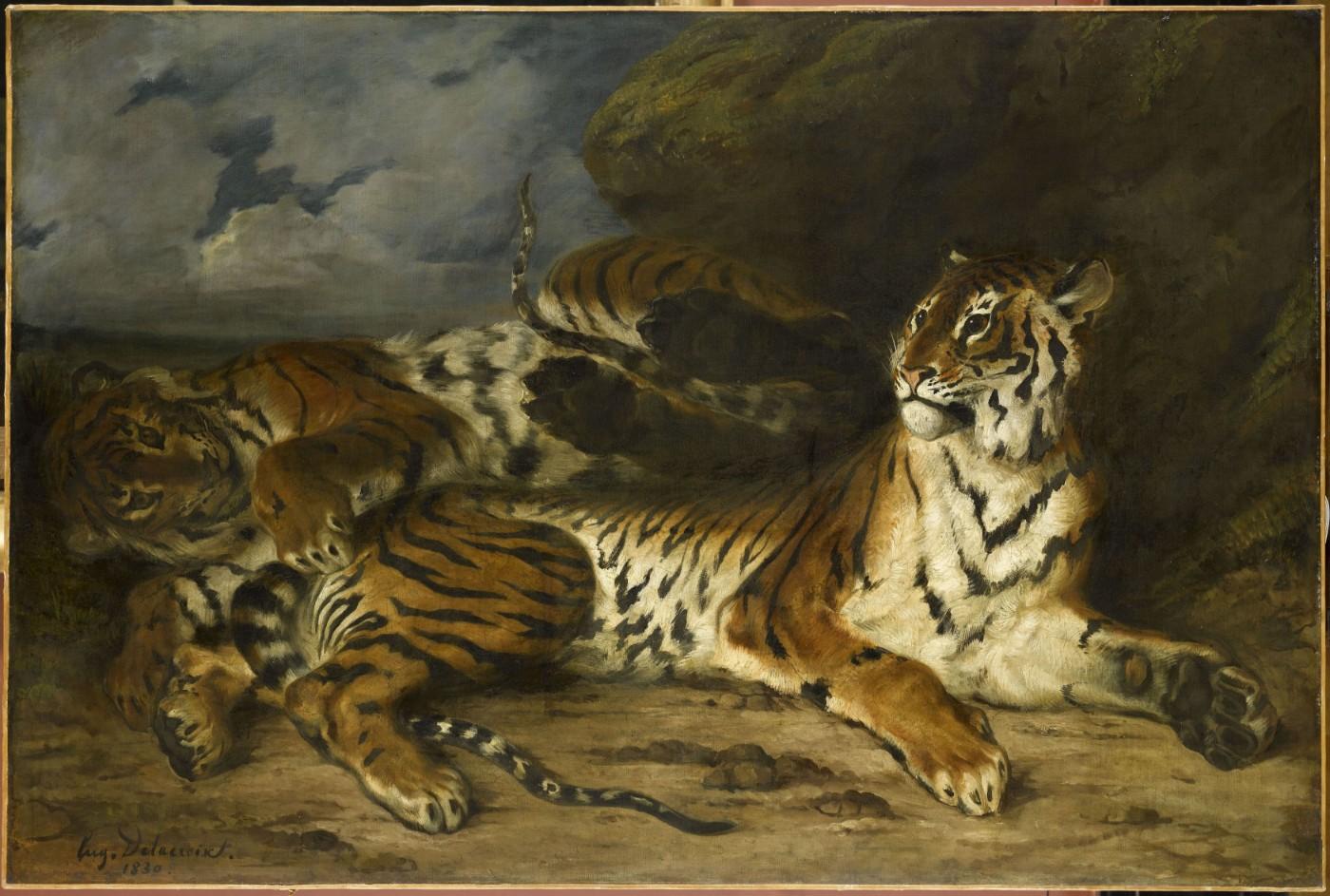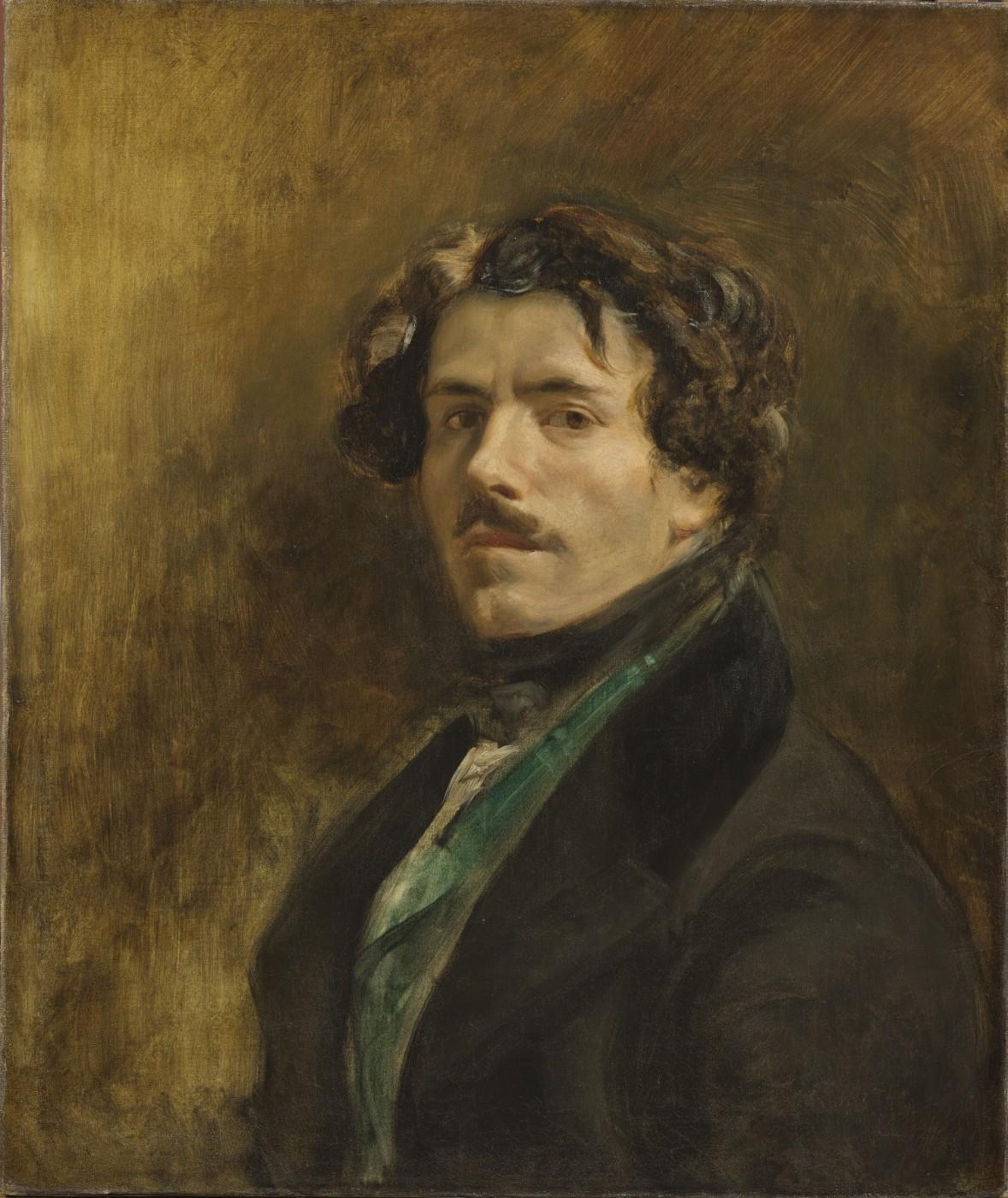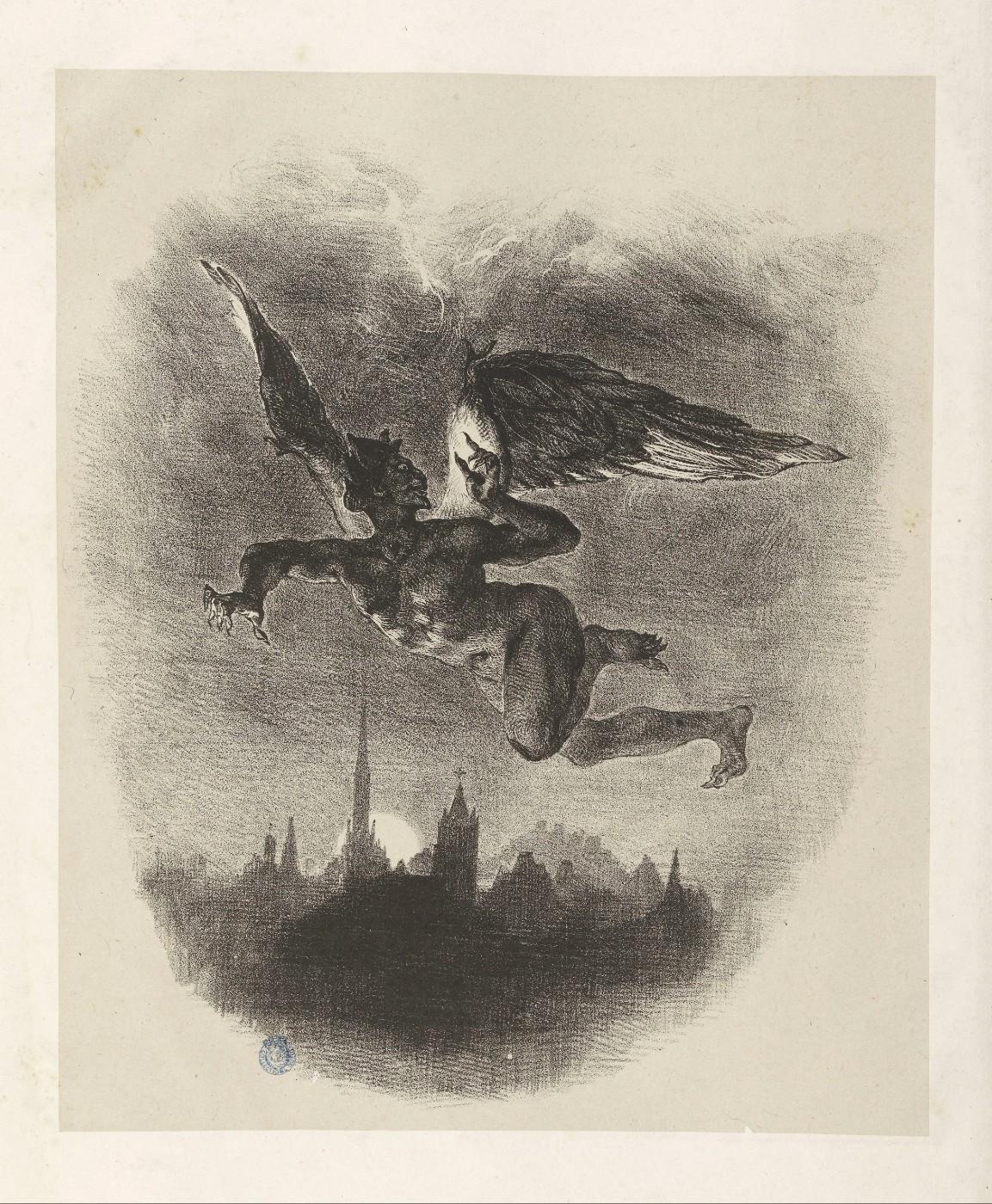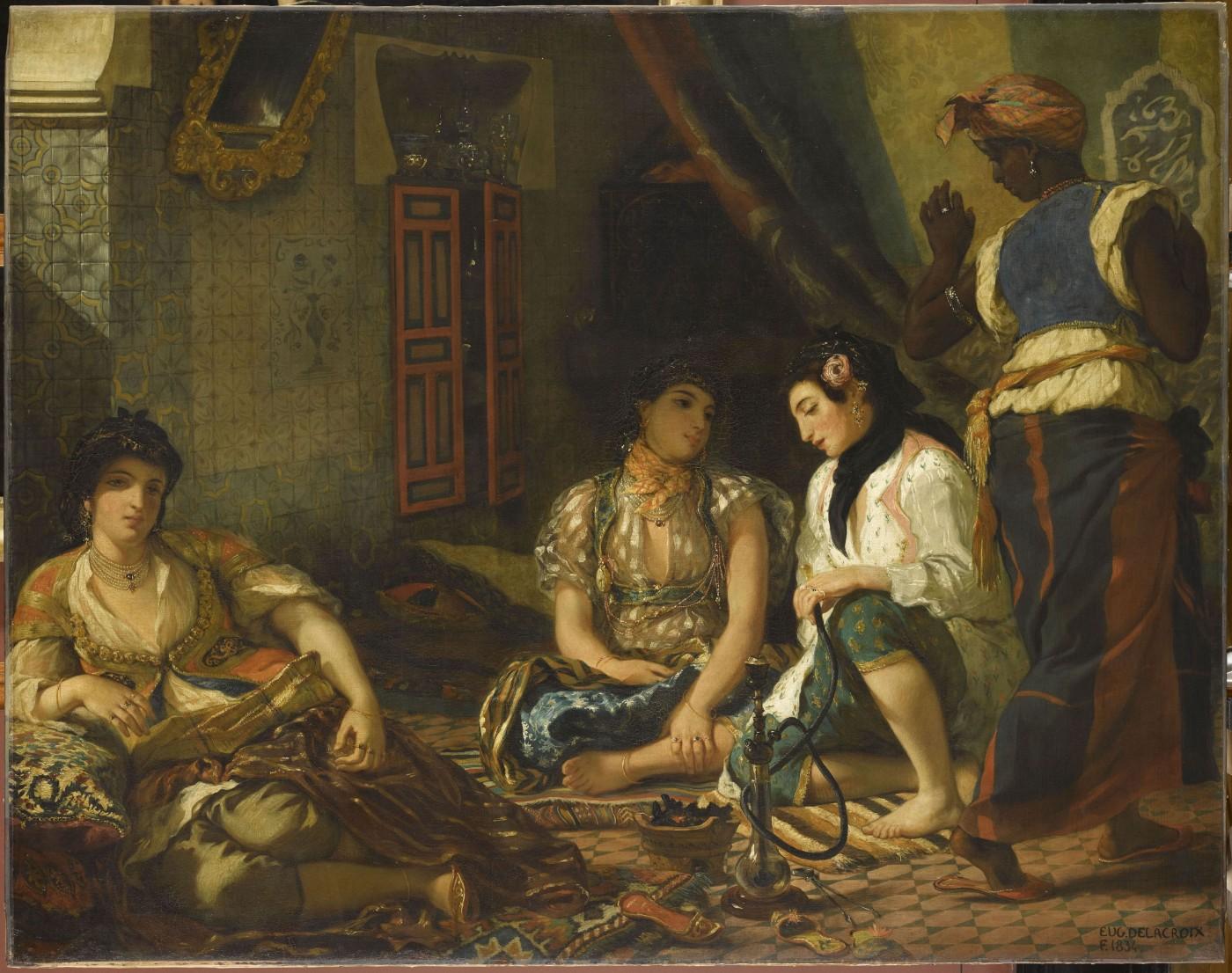Painting brilliantly colored works with emotive physicality, Eugène Delacroix was a defining artist of French Romanticism. His first comprehensive retrospective in North America, the Metropolitan Museum’s Delacroix pays homage to the breadth and scale of his oeuvre, assembling an impressive collection of loans from North American and European collections. Stretching across twelve galleries, the exhibition moves chronologically from the 1820s through the 1860s, tracing the development of an imaginative artist zealously devoted to his craft.
A work like Tiger Playing with its Mother (1830) embodies his canvases’ characteristic sense of drama and motion. Contouring the beasts’ stripes and taught muscles with energetic brushstrokes, he captures both the cub’s animation and the mother’s restrained power. The painting’s sinuous dynamism speaks to Delacroix’s life-long engagement with Old Masters like Rubens, an engagement also evident in The Lion Hunt (1855). At the same time, Delacroix’s life-size depiction of tigers testifies to his willingness to defy academic conventions, which denied animal paintings such monumental treatment.




























